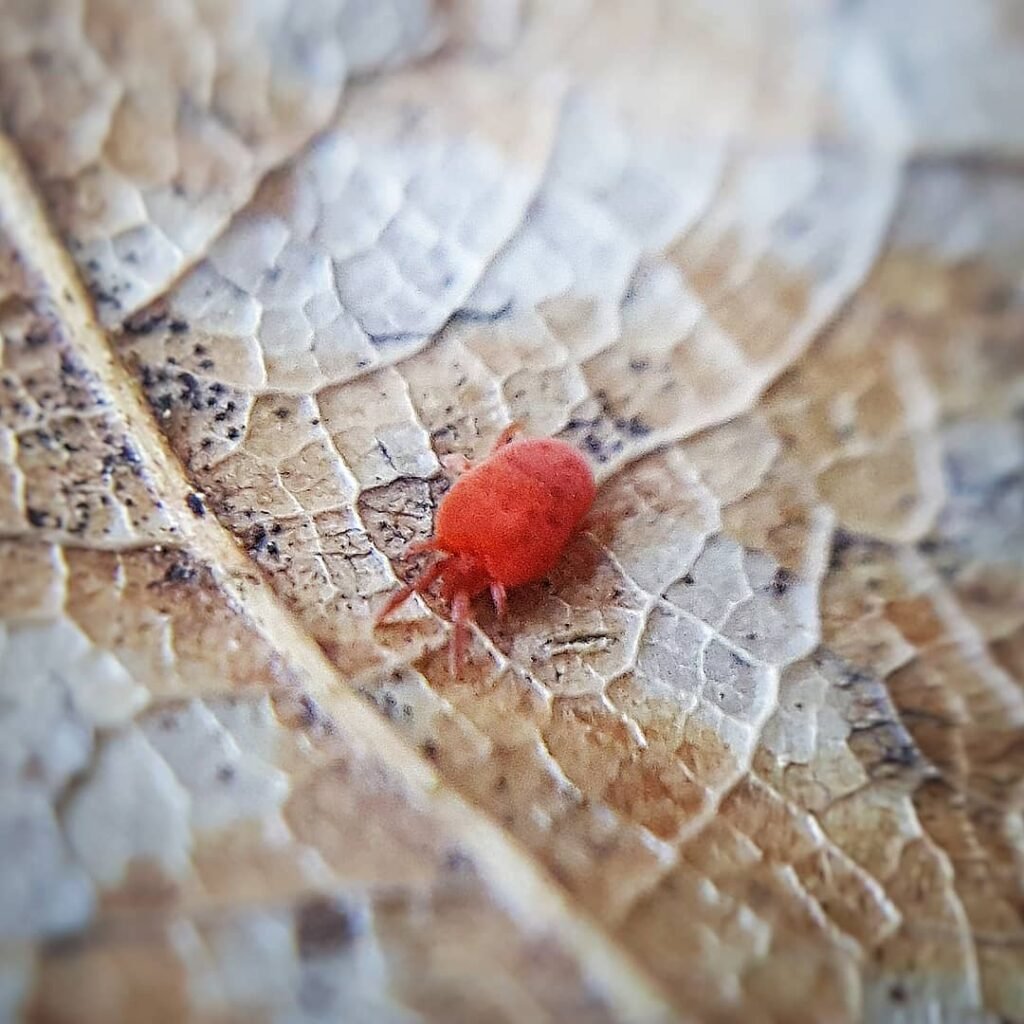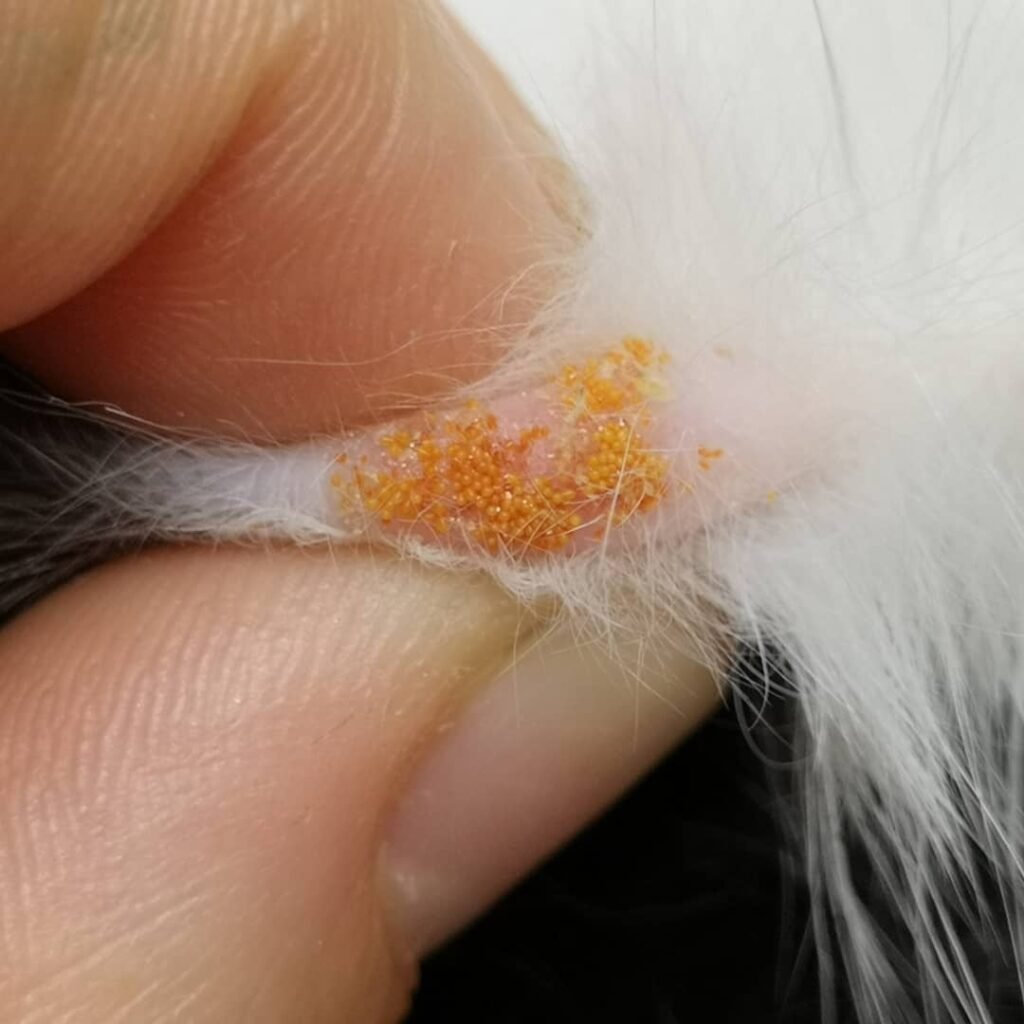Grass mites in dogs are parasites that are generally most active in the warmer periods of each year. They come off as extremely annoying troublemakers that can be a nuisance, not only to humans but also to our dogs. These tiny parasites typically cause serious itching and, in exceptionally awful circumstances, they bring about skin inflammation.
In this guide, we will show you what the grass mite is all about and how to handle the infestation. Additionally, we’ll let you in on what precautions you can take so as to prevent grass mites from ever getting to your dog in the first place.
What is the Grass Mite?
Like all mites, grass mites are arachnids. The grass mite is also referred to as the harvest mite (Neotrombicula autumnalis), or as ‘autumn mite’ or ‘autumn grass mite’. Regardless of the name, they are ectoparasites, as they attack their host animal’s skin and feed on its body fluids. Grass mites love warm climates, and are now found across large parts of the US.

Interestingly, adult grass mites are not the ones that affect your dogs. Adult grass mites do not live as parasites and they do not need a host. The larvae, on the other hand, are the real culprits. After successfully biting a host to feed, they go through several nymph stages to grow into adult grass mites and live as running mites on the ground, feeding on sap.
How do Grass Mites attack dogs?
As their name suggests, grass mites make their homes in grass. The adult mites reproduce by laying eggs in grasses. Larvae from these eggs form within four weeks. Grass mite larvae cling onto grass blades or moss while waiting for a fitting host. In this case the host sadly, is your unsuspecting dog.
When the larva bites a host, the larva secretes a substance that causes itching after about 3 to 24 hours. The bite itself is not felt because when the larva penetrates, it burrows only a few millimeters into the skin. The larvae feed on tissue fluid and lymph fluid, not blood. However, where they hit your dog’s blood vessel with a bite, grass mites also ingest the host’s blood.
The bite itself does not directly cause an infection because the larvae are not carriers of infections. Albeit the severe itching and subsequent scratching of the bite sites can lead to secondary infections.
How do I recognize grass mite on dogs?
The larva is only 0.2 to 0.3 millimeters in size and is difficult to see with the naked eye. If you suspect them in your dog, you’ll need to perform a detailed inspection to fish them out.
Recognizing grass mites in your yard
On a dry, sunny day, place a white cloth, such as kitchen paper or a sheet of white paper, on the lawn. The reflective surface will attract the larvae. If you see orange to red-colored spots on the surface of the “decoy”, then it is grass mites.
Recognizing grass mites on your dog
If your dog does not have thick fur, it will be easier for you to track down the mites. Small orange dots on the dog’s skin could be a sign of mites.

If your dog has too thick fur, you can use a comb (e.g. flea comb) to reveal possible infestation. Place a white cloth underneath when combing. Use the comb to brush against the growth of hair. If small orange to red-colored particles appear on the cloth after shaking out the comb, then they are probably grass mites.
Grass mites attack dogs particularly in areas of their body that commonly touch the ground. Above all, they prefer thin skin. Areas with thin skin makes it easier for them to penetrate with their mouthparts. Thus, pay particular attention to the following areas:
- Paw, toes, and spaces in between
- Eyelid
- Ear area
- Stomach or chest area
- Tail root
How to prevent grass mites on your dog
Get rid of grass mites in the garden
If you have a lawn that your dog likes to romp around in, you can take the following measures:
- Mow the lawn weekly. The larvae like to stay at the tips of the blades of grass. In this way, you block them from their favorite whereabouts.
- Please note that larvae in the clippings are still alive. Do not dispose of the waste in your own compost heap, but take it to the nearest recycling center or container.
- Another popular place to stay for pests is moss. Moss can form between the grass. That is why it is good if the garden is scarified regularly.
- It is best to fertilize the lawn with lime nitrogen at the beginning of May. Let the lawn dry first. Then mow it and put the fertilizer on it.
- The mites don’t like moisture. Water the lawn regularly. This will force the mites to hide in the ground.
Treat your dog to prevent grass mites

Medical options for preventing Grass mites on your dog
Some specialist sites recommend tea tree oil for combating the annoying mites. However, you should be aware that tea tree oil can cause severe allergies in dogs. It is better for your vet to decide and, if necessary, prescribe a preparation that has tea tree oil added to it. He can also recommend a suitable parasite shampoo.
Also, a vast amount of anti-mite agents are available as sprays, spot-ons or special collars, all to protect against mites. Sadly though, anti-mite insecticides often have consequences on the health of your pets. It is best to speak to your vet to decide the most suitable option available.
Home Remedies for preventing mites on your dog
Before you go for a walk, you may rub your dog with organic coconut oil. Coconut oil also helps to alleviate the itching and the affected areas to heal faster. It has a very high content of lauric acid. The parasites don’t like that at all. Nevertheless, you should check your dog regularly, as herbal products do not provide 100% protection.
If you have been walking through the meadow with your dog, comb and wash them off thoroughly with lukewarm water. Check your dog’s fur after every walk for possible infestation.
Mites love meadows and forests. During the larval season (May – October), change the route of your walk and prefer roads. Try going for morning walks as the mites are not as active at that time.
Symptoms of a Grass Mite Infestation
When the mite penetrates the skin, it releases a secretion that causes the tissue to peel off. The secretion usually leads to severe itching. You can easily tell there has been an infestation if your dog constantly licks and scratches parts of its body.
Where unattended, the scratching caused by the infection can lead to wounds and bacterial infections, skin fungus. Subsequently, your dog can develop a weakened immune system.
How to treat a Grass Mite infestation
In contrast to other parasites such as fleas, grass mites disappear on their own. Since they cause severe itching in most dogs, affected dogs should still be treated.

Home Remedies for treating Grass mites on dogs
These steps can be taken to treat a grass mite infestation on your dog:
- Rinse affected areas with lukewarm water
- Thoroughly clean the blankets, pillows, toys, dog beds and other items
- Use natural shampoos
- Carefully dab oozing inflammation dry and treat with ointment
Warmed coconut oil can calm the itchiness and choke the mites on the skin. Tea tree oil and neem oil, as well as salmon oil supplements, can also help.
Medical options for treating grass mite attacks on dogs
Anti-mite sprays are also an effective tool for treating dog mite infestations, however when using them, you should check the active ingredients they contain, because it is not uncommon for them to be insecticides.These may kill the grass mites on the dog’s body, but they could also have adverse effects on the health of your dog.
If the areas are inflamed or badly attacked, you must contact your vet immediately. Your vet will examine the areas of skin and prescribe appropriate treatment. They can also check whether it is really grass mite larvae or whether there is even talk of an allergy.
Frequently Asked Questions about Grass Mites in Dogs
Final Thoughts on Grass Mites
Grass mites are potentially one of your furry friend’s most cruel enemies. However, your dog never has to suffer the disastrous discomfort these parasites bring. Be sure to follow the precautions laid out in this article. And if your pet is already infested, take action today by visiting your vet to determine what treatment is most perfectly suited to your dog.
